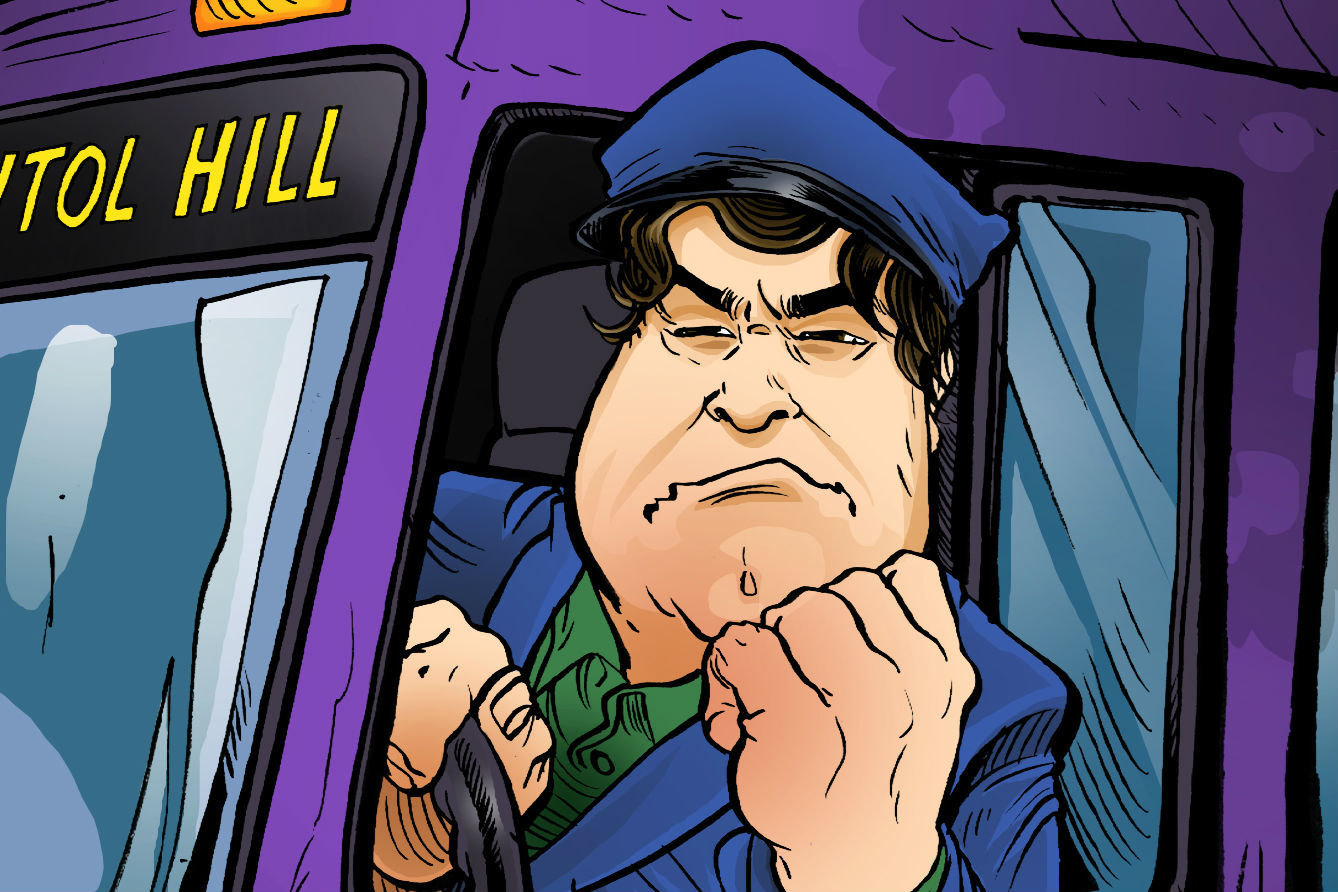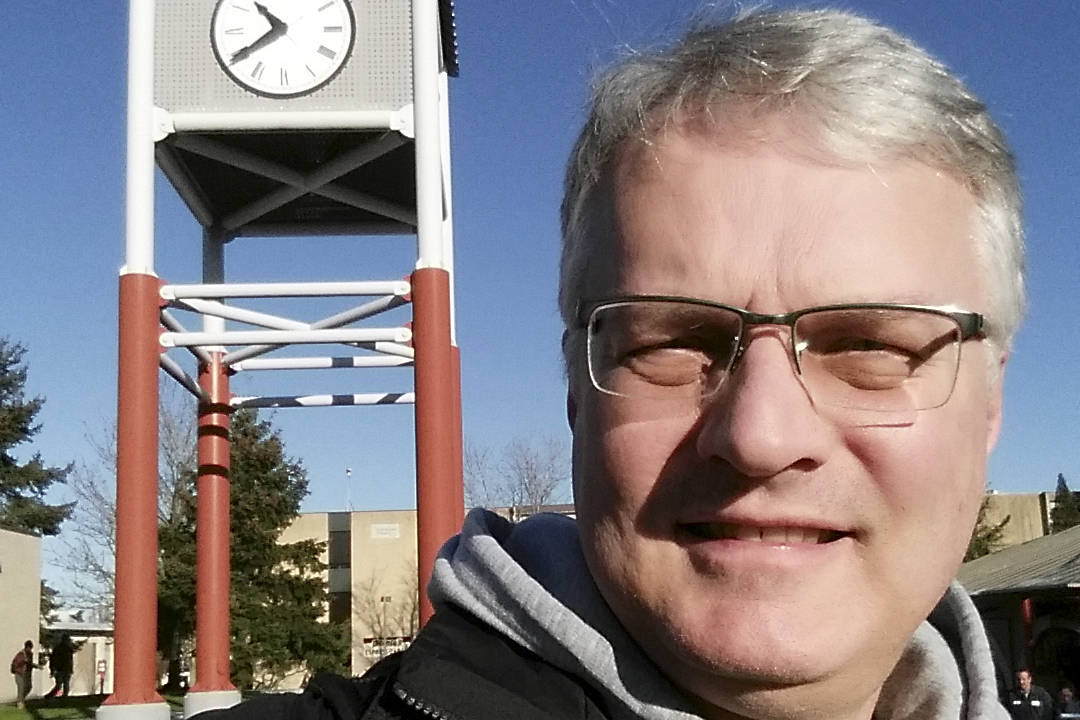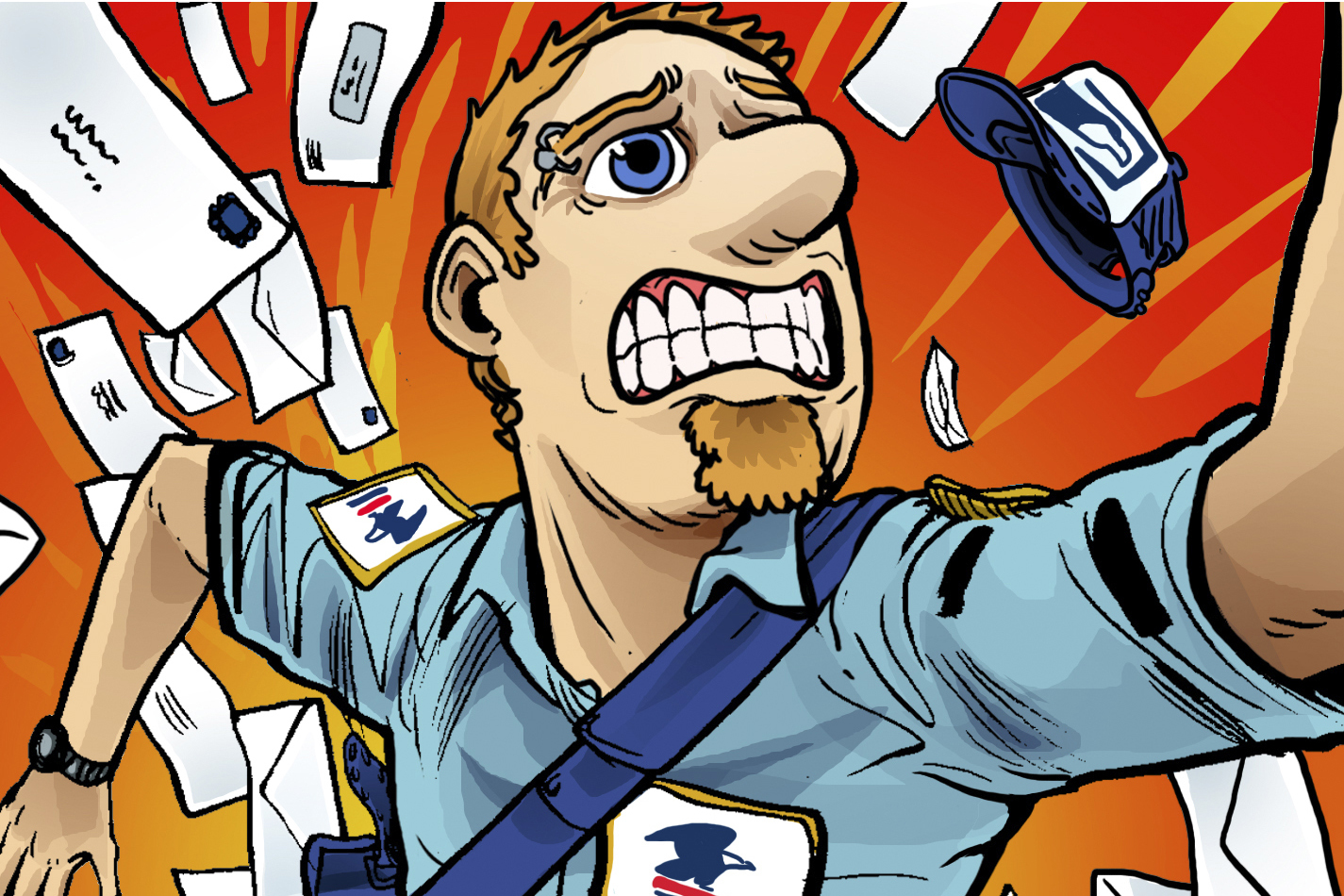I grew up watching Ralph Kramden come home from his job as a bus driver on The Honeymooners and chastise his wife, Alice. But I didn’t get to watch him driving his bus through Brooklyn, talking with passengers and negotiating traffic. That was taken for granted; Ralph’s biggest challenge was playing golf with the company vice president and substituting for sick drivers. What happened between “I’m late for work!” and “Alice, I’m home!” was a mystery.
So I didn’t grow up wanting to be a bus driver. (Does anyone?) Not even in my 20s, when Big Choices loomed, did it cross my mind. Bus drivers were one notch above garbagemen. A friend’s mom said, “If you don’t go to college, you might end up as a bus driver.”
Fast-forward to 2013: Metro was hiring!
The job offered $18 an hour to start plus benefits. Extra shifts and free training. In a still-crappy economy, unless you were a software developer, this job merited second thoughts.
“Can I really be that guy behind the wheel of the 43 bus that takes me from Capitol Hill to downtown?” I wondered as I worked through my online application.
In the classroom training at 11911 E. Marginal Way S.—a huge buidling with dozens of buses parked outside—we watch videos about safe driving, using the mirrors (“Check your mirrors every five seconds”), multitasking, being aware of traffic near the bus, bicyclists, pedestrians, children, animals—everything. Be courteous and helpful to passengers, we learn. “Anyone can learn to drive a bus,” the presenter says. “Many of you don’t have experience with large vehicles—that’s why you’re here. We’ll teach you.”
From my unfortunate experience at UPS (long story short, I failed the driving test when I backed the truck into a parked car on a sidestreet), I didn’t expect driving a bus to be easy. But I was determined to try.
On the first day of hands-on driver training (following lots of classroom work), my group is escorted into the bus yard and introduced to the buses we’d drive that day—wheels, windows, doors, controls, driver seats, mirrors, dashboard, and pedals. We’re training on the short ones: driving an “articulated” (double-length) bus requires at least one year of experience in a small bus. Step #1: safety check. Tires OK? Broken or missing lights? Cracked side panels? Other damage to report? For me, it’s a lot to learn quickly. Steps: Release emergency brake; check headlights and parking lights. Rear emergency lights on? Convex mirrors adjusted? Door controls working? Seat belt fastened? Radio on? Messages from dispatcher? Log book updated? Fare box secure? Passengers seated before proceeding?
“Let’s go!” barks the instructor. “Right foot on the gas pedal—More! Accelerate faster! Don’t get caught in the intersection. When do you start the turn? NOW! PULL RIGHT!” Everything must be done right, and in correct sequence. We won’t get many chances. We’re still in the bus yard, not moving, but the instructor yells, “You just injured 20 passengers,” and a few minutes later, “You just hit the car on your left.” My confidence ebbs. “Do that again and you won’t be back,” he says.
Now we’ve reviewed what to do when a crazy man runs across the tracks in the tunnel; an angry patron hits the side of the bus; a woman halfway back throws up and faints while you’re going 55 mph on an exit ramp; a baby screams so loud you can’t hear; two passengers’ dogs suddenly attack each other. It’s time to actually drive.
On my very first day behind the wheel, the instructor says we’re going out on I-5. I’m in disbelief. We head out of the yard onto East Marginal Way South. “Nice turn, OK, speed up.” Left onto South 128th, then left onto Macadam Road and under SR 599, north to 124th Street. Lots of practice—stopping, starting, turn here, stop. Start up slowly, will the green light hold? Proceed, watch the car ahead, stop. Right turn signal. Eventually we’re near the entrance ramp to I-5 North. Gulp! I’m on a hill sloping downward. “What’s your speed?” “35.” “Too fast! Slow down!” “How fast should I go?” “14 is the limit on hills. Don’t you remember?” “Uh, no, sorry.” “FOURTEEN MILES PER HOUR. Don’t forget.” “OK, sorry.” I carefully continue down the hill at 14 mph. Now I’m at the intersection across from the ramp. “Pay attention! Don’t block traffic. NOW GO!” I step on the gas. How will I learn this? I wonder. But it will be easier when I’m alone, without someone barking at me constantly. That makes me nervous as hell.
As I hesitantly jerk the bus down the entrance ramp, the instructor says: “Look around—is anything next to us? No cars or trucks behind us? Mirrors? CHECK YOUR MIRRORS! I told you, keep checking your mirrors. Now ACCELERATE! Speed up as you move into the right lane. You’re too slow! We should be going 55—step on the gas!”
I can’t wait to reach our exit about six miles north and put this nightmare behind me, and hopefully walk out alive. I’m not at all confident of making it. Does the instructor want to die as well? I grip the wheel, sweating, and my heart is pounding, while the instructor yells, “Faster! You’re making me nervous! Are you nervous?” “Yes, I’m nervous!” I reply. “Don’t be nervous—just drive! Faster! You keep slowing down. Don’t slow down!”
Next day: Now I’m driving on Second Avenue downtown, headed toward Belltown. People are swaying near the curb, dogs are pulling leashes, moms with strollers, a fire truck roaring past, cars honking—from where? Cutting in front of me—“Careful—watch out! You gotta stay alert.” I thought I was.
So I’m stopping at the stop signs, no problem. Slowing down and pulling over. We do that about five times between Benaroya Hall and Wall Street in Belltown. I check my mirrors (what else?) before pulling out into traffic. I hear horns—it’s probably an upset driver who wants to pass me. At the next stop I practice opening the rear doors to let imaginary passengers out, then I check to be sure it’s closed. I did it! Yay! Must remember the back-door control buttons, I tell myself. “Don’t ever start with the back door open,” the instructor says. “I didn’t.” “I know, I’m just telling you. Don’t ever do it. Check your doors—then look ahead, scan the street. Check your mirrors. What do you do?” “Look ahead, scan the street, check my mirrors.” “Right, and … ?” “Be sure nothing’s next to the bus, no cars approaching the bus. No sirens, no flashing lights, all clear.” “You sure?” “Yes.” “I’m worried about you,” he says. “Why?” “You don’t seem confident. You seem nervous.” “I’m OK.” “What’s that?” “A car approaching the intersection.” “Is it stopping?” “I think so.” “NO! It’s not stopping. That car might run right into us. What do you do?” “I, uh, start slowing down.” “And you horn?” “Yes, horn” and I blast the horn. “Mr. Segal, pull over and stop,” he says, in a serious tone. “Where?” “Where it’s safe to pull over! At the next bus stop, pull over.” I maneuver us through traffic, my turn signal on, I’m checking the mirrors nervously. “OK, turn off the engine and take out the keys.” I just failed the training.
The instructor takes out his log. “Mr. Segal, I’m taking you off the program.” He looks at his log sheet. “You failed to perform 11 of the 26 required tasks on this run.” “I did? 11?” “Yep, here, where I circled in red. All those, I had to tell you what to do. This is not good.” I watched him study the test sheet. “Trainee failed to check turn signals. Failed to check convex rear mirrors every 10 seconds. Uh, failed to sound warning beeps after car passed. Failed … ”
I ask, “Can I have a second chance? Can you ask the supervisor if I can start over and reschedule my training?” “I can forward your request to the manager—he will contact you.”
Three weeks later, I’m back on Second Avenue, heading south toward Bell Street. But this time, my (second) instructor is barking, “Watch out! Did you see that car? You almost hit a pedestrian approaching the bus! Now GO! The light’s green! Are you watching?” Two seconds later, she says: “Did you see that car approaching?” “Yes.” “Why didn’t you start braking?” “I, uh, thought … ” She instructs: “When a vehicle is approaching, prepare to slow down and stop.” “Yes.” “I’m not confident about this. Mr. Segal, please pull over at the nearest stop and turn off the motor.”
I knew it was over. I was no Ralph Kramden, consummate driver of my youth. “Mr. Segal, we gave you a second chance. I’m sorry, but I concur with the other trainer—and we have decades of experience. You’re not a bus driver.” I’m disappointed, of course. Who likes to fail? But I muster, “OK, thank you.” What else is there to say? Should I have studied the training guide more? No, it’s what you do in real time, in a real bus.
I hop on Metro’s Route 13 and head downtown to catch Route 49 home. The driver says, “How’s your day goin’, sir?” “Oh, not bad,” I say, “Just had a change in plans.” He pulls into traffic. I wonder how he makes it look so easy. As I step off the bus, he says, “Have a good one, buddy.”
news@seattleweekly.com






